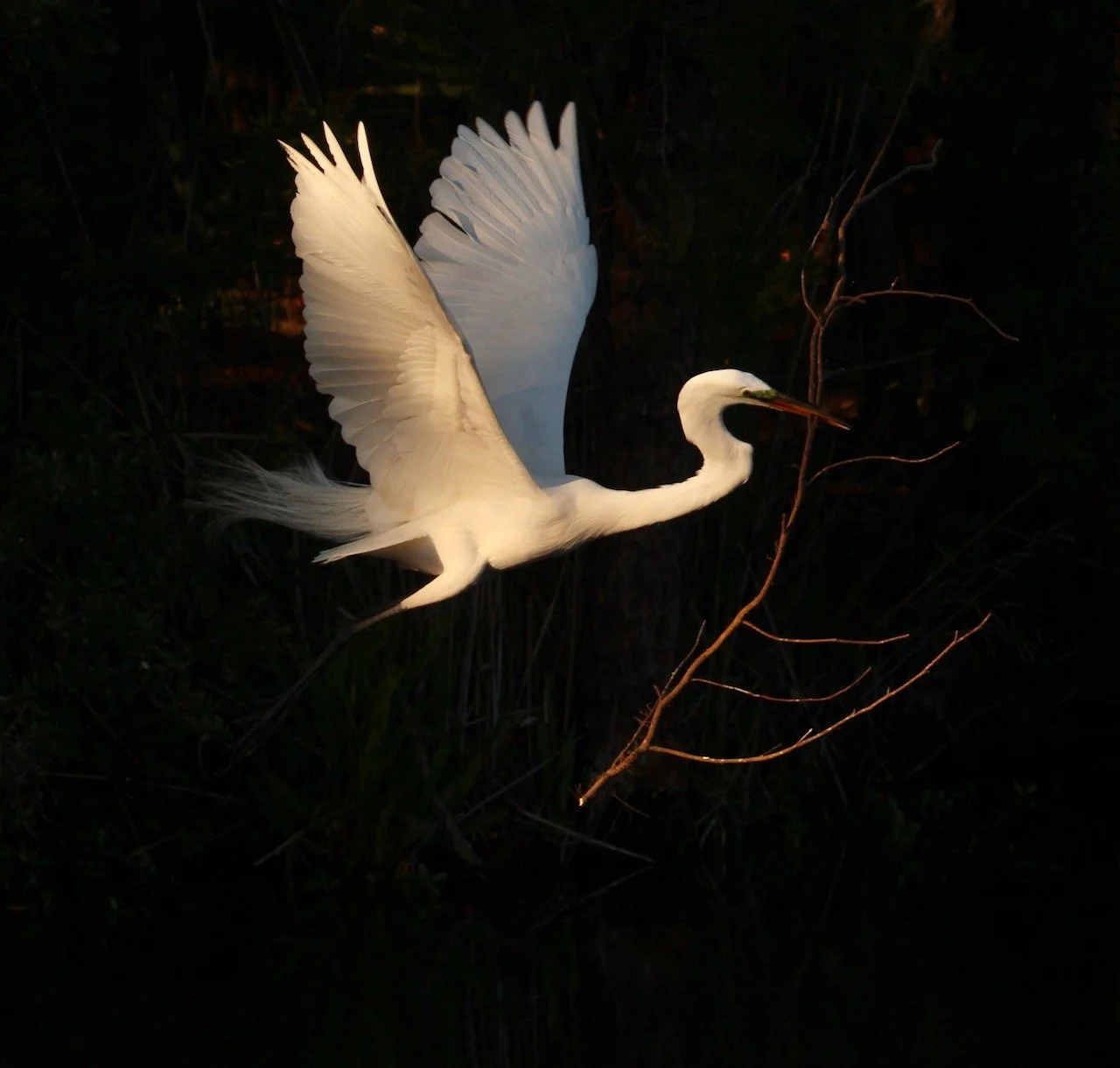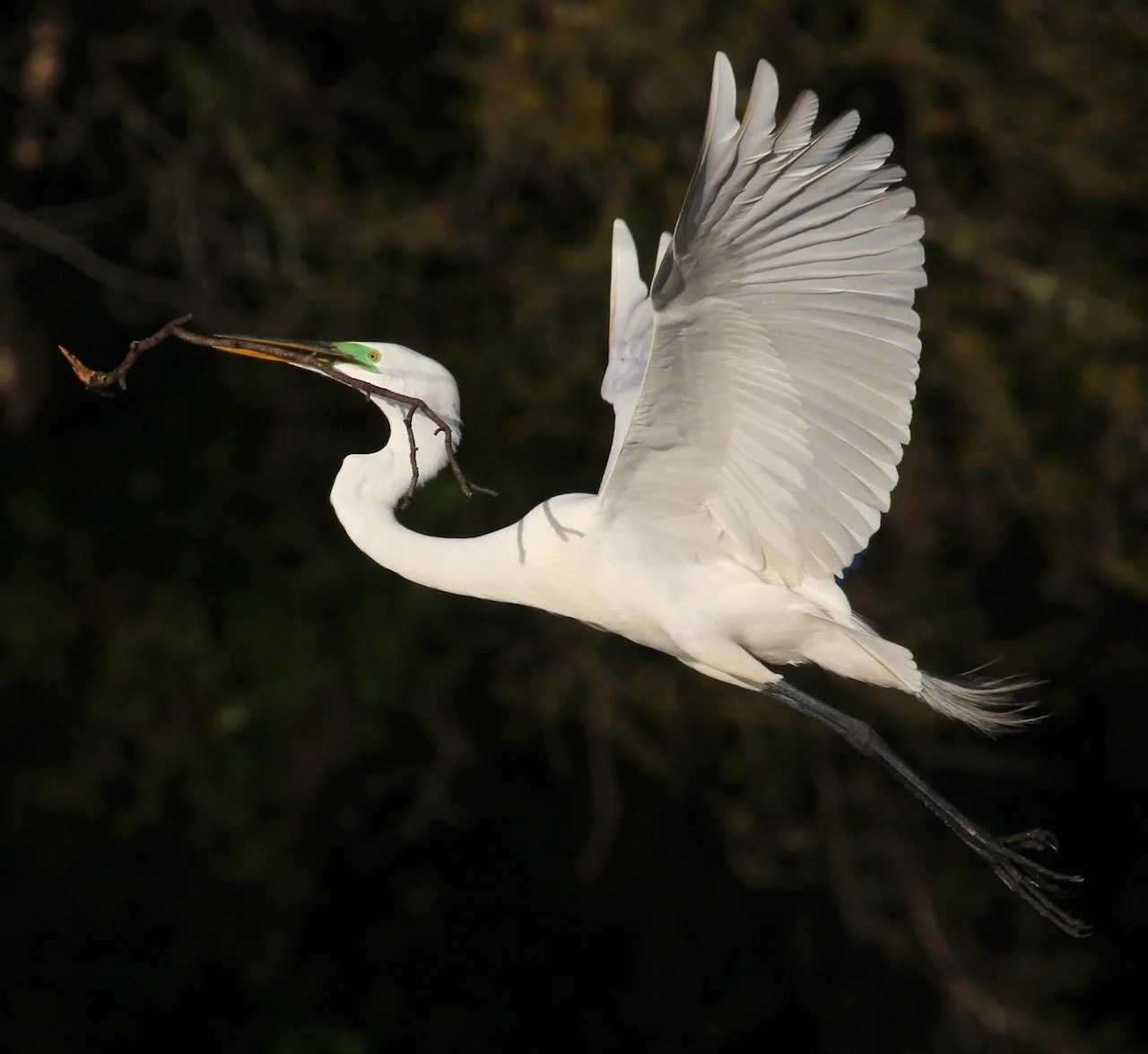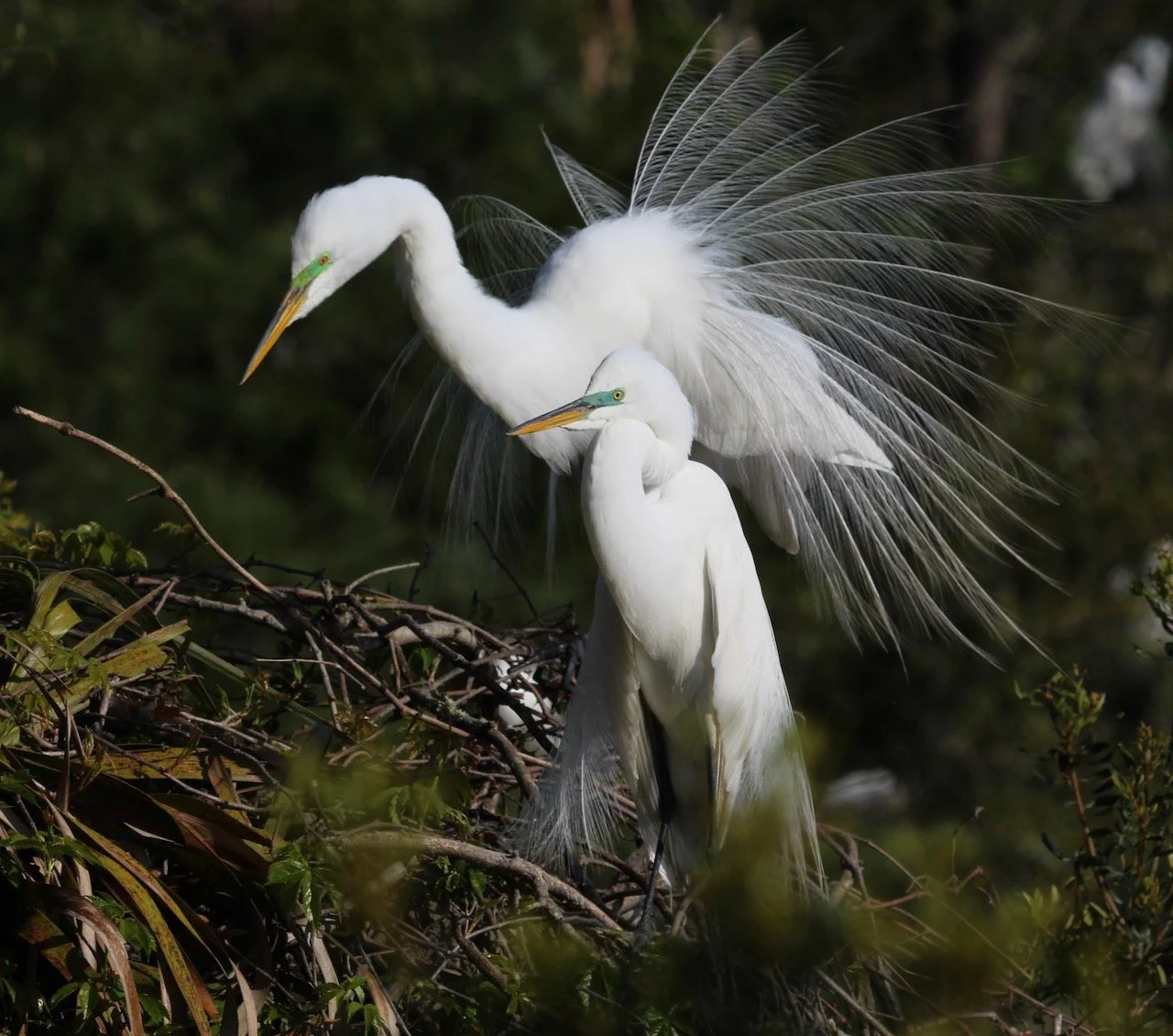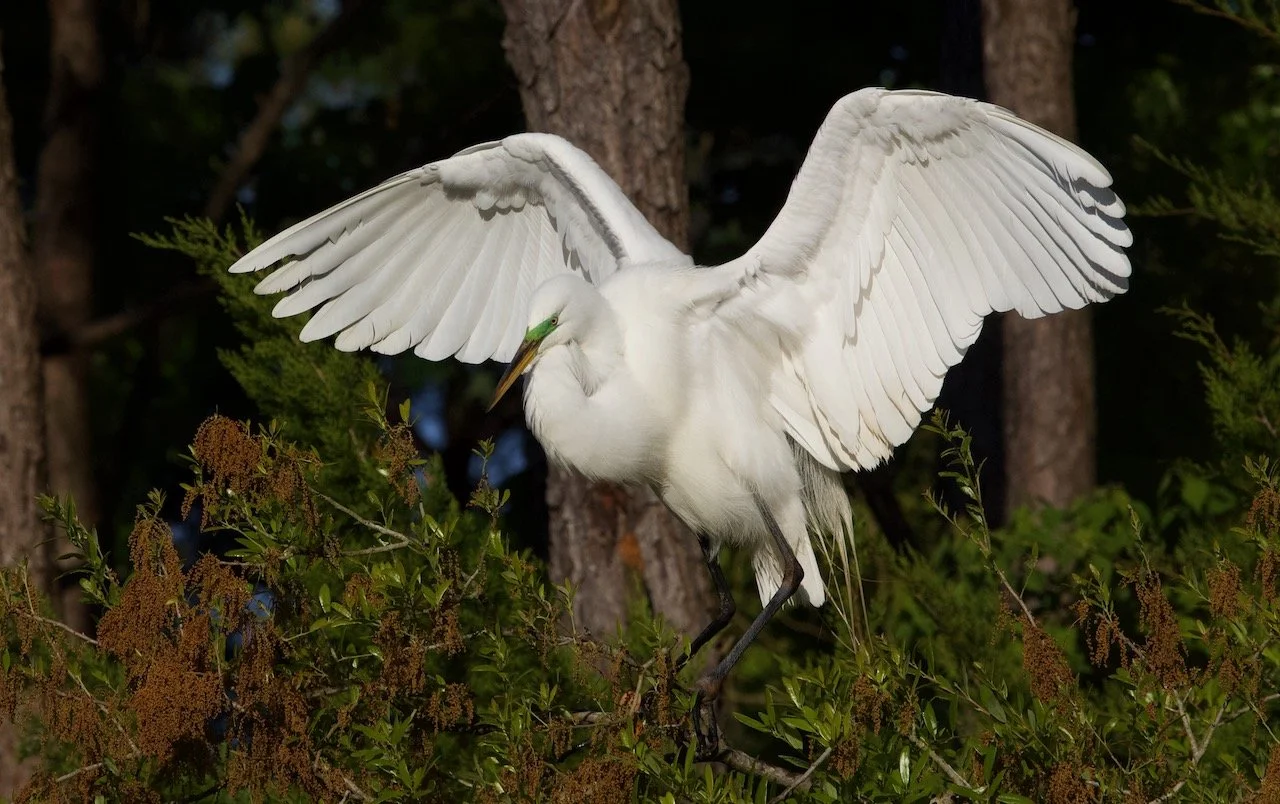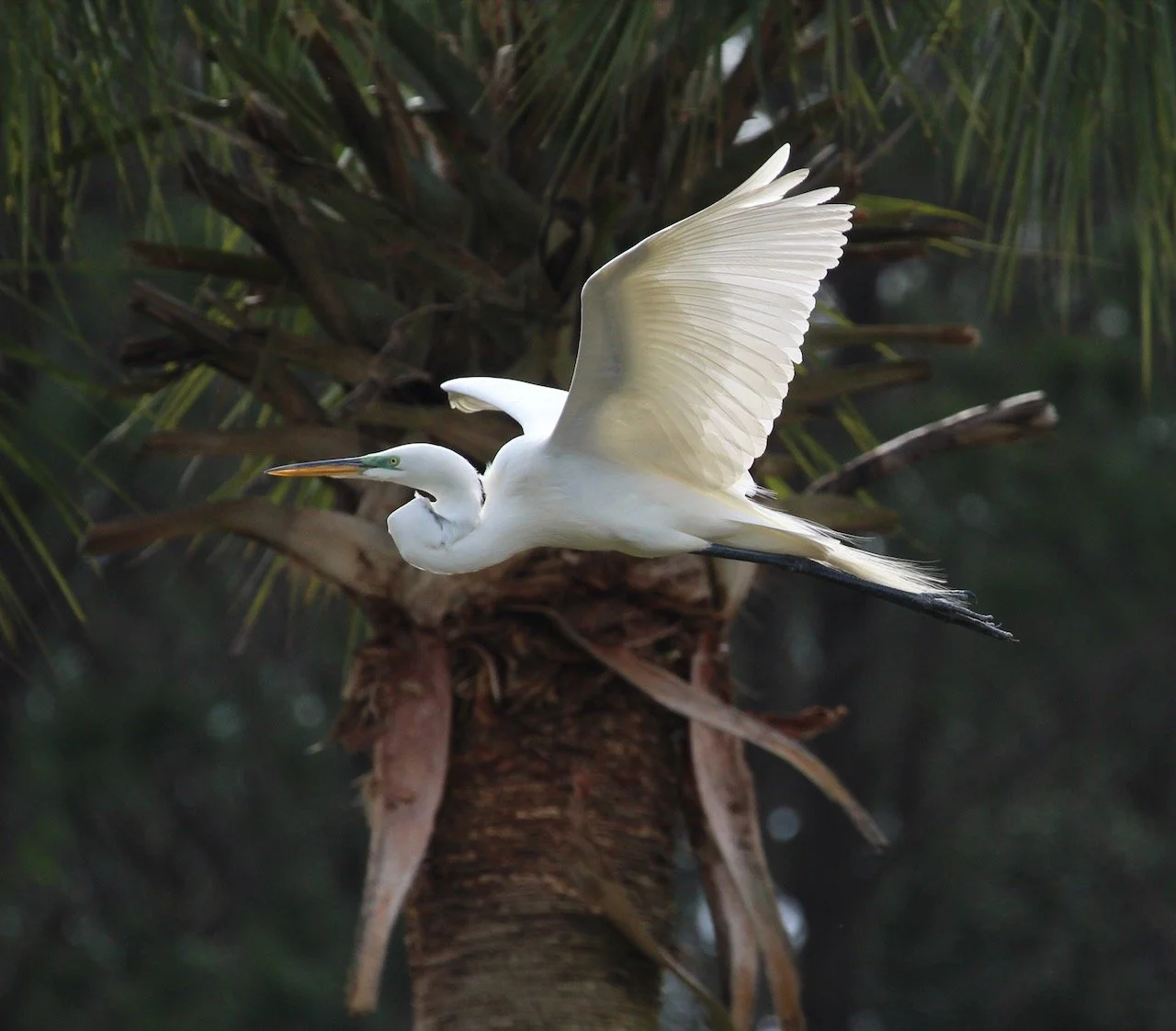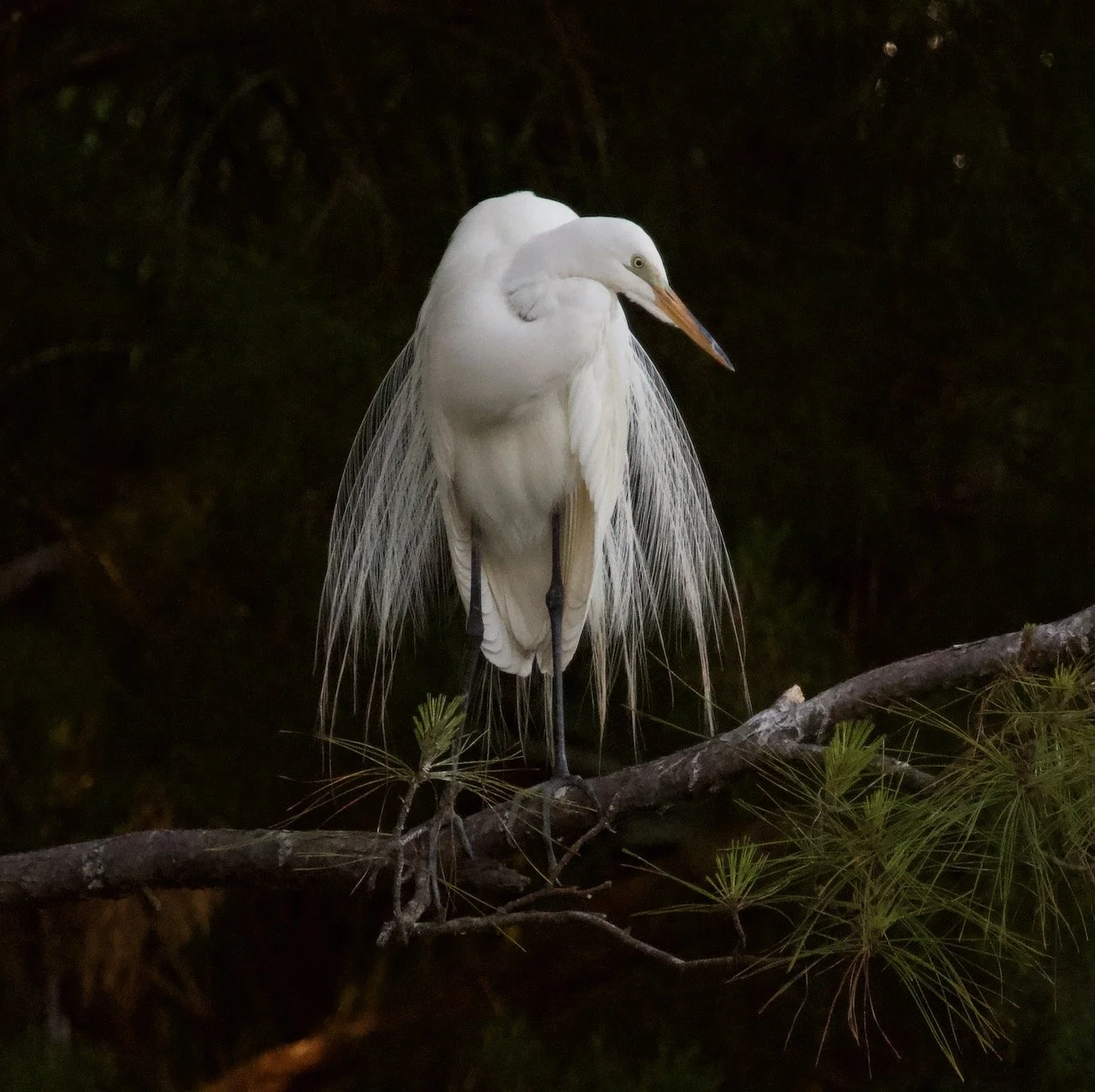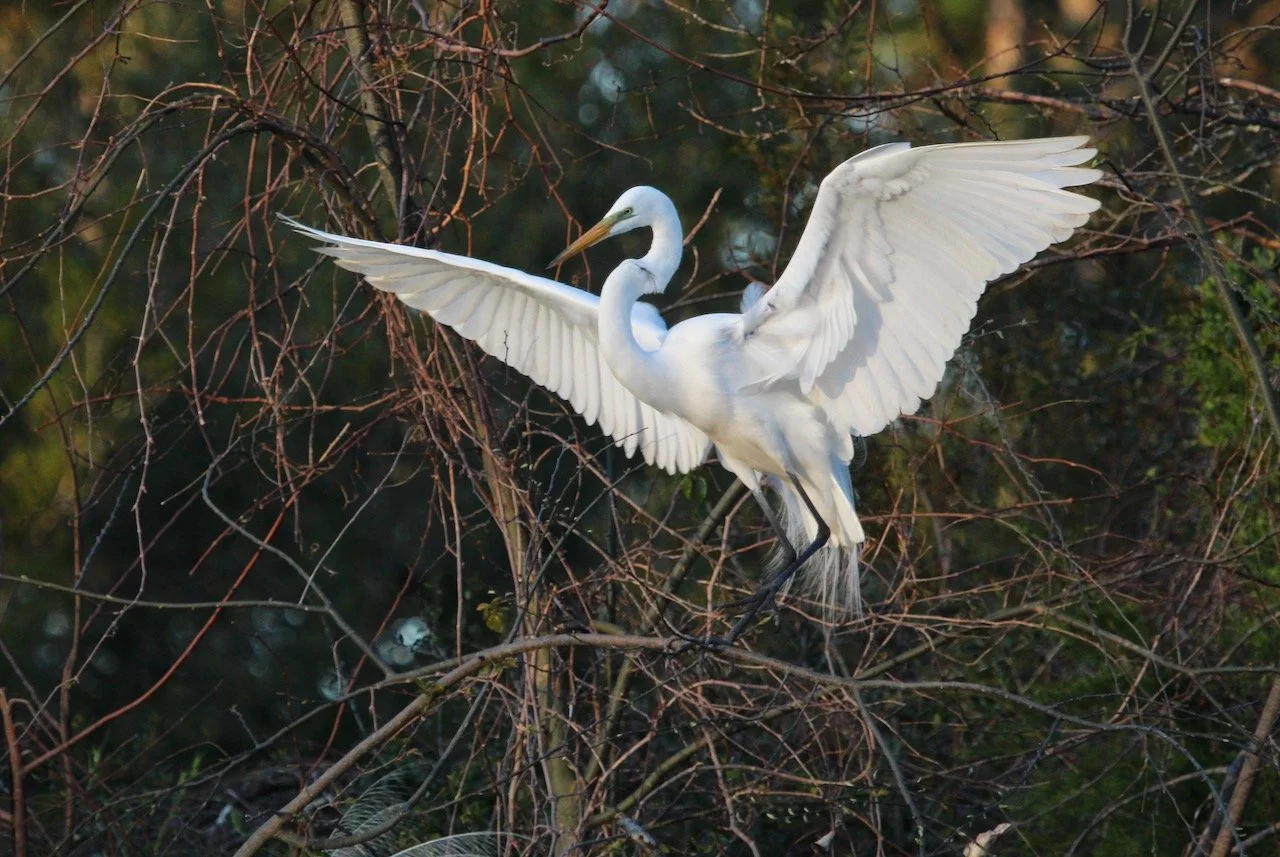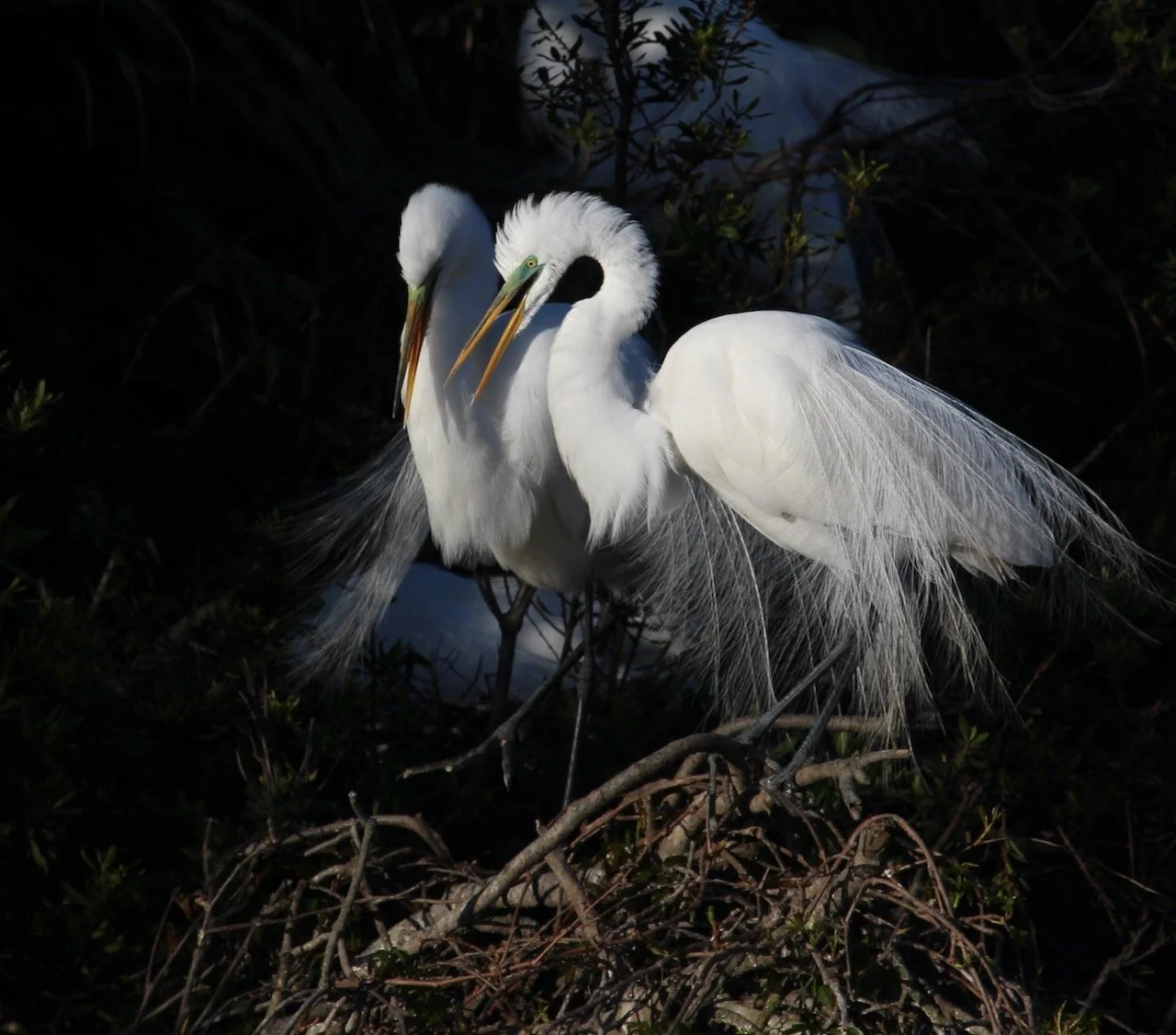In the Spotlight ~ High contrast bird photography!
First, let me say that I am not a professional photographer. I only profess to know the basics. Many of my birding friends and acquaintances have vast knowledge about cameras and lenses, and can speak the lingo. Much of it is over my head, but, I do love to tinker with camera settings, just like with my golf swing! I thought I’d share a recent series of Great Egret photographs that I took under challenging conditions that I thought turned out to be quite dramatic.
Photographing white birds in bright light and dimming light is always challenging. When I’m photographing Great Egrets I like to use the spot meter as a camera setting with a middle, single dot focal point. The spot meter tells the camera to focus on the bird primarily, helping to get a correct exposure on the white bird, without “blowing out” the detail of the feathers. The single dot focal point helps track a bird in motion and focuses more quickly on the subject.
Other things to consider when photographing birds in motion in tough lighting conditions are ISO, shutter speed, and the aperture setting. ISO (100, 200, 400, 800…) controls the amount of light the camera lets in. Shutter speed is really important to stop motion blur and also affects the amount of light the camera lets in. The aperture setting can help one focus more on the bird than the background by using a larger aperture like f/5.6, and is the third setting that has to be considered when calculating how much light is on the subject.
They all interact to help create the proper exposure and to stop motion blur. So there are a number of variables that a photographer has to consider when photographing birds. Sometimes you only get one shot at something and have to have all your settings preset or you miss the shot. Other times, when there is a lot of birding activity, it allows you to tinker with settings in order to get a variety of outcomes with your images. That’s when one can become more artistic with their photographs.
Recently, I was out photographing Great Egrets during the Golden Hour. The egrets were busy going back and forth across a pond, fetching sticks to build their nests. The surrounding woods and water were darkening down leaning toward low lighting conditions. But, when the warm evening sunlight caught the egrets in flight, they would light up as if in a spotlight on stage.
Here is a series of shots that I took using a variety of settings. The spot meter helped darken down the background and helped create strong contrast. As the light slowly disappeared my settings kept changing.
I learn by tinkering. It is always fascinating for me to look back at which settings worked well, and analyze why. I hope you enjoyed seeing this series of egret photographs and learned a little bit about the challenges involved in taking them.
I love photographing birds and sharing my images. I also love painting them. By analyzing my successful photographs it helps inspire me to put that little extra something into each new painting I create. Painting is an evolutionary process and studying photography is a great way to evolve as a painter.
Please check back soon to see what’s next on my easel. :)
“One of the joys of being an artist is having the freedom to follow my passion….”
What’s next?
Drawing by William R Beebe

